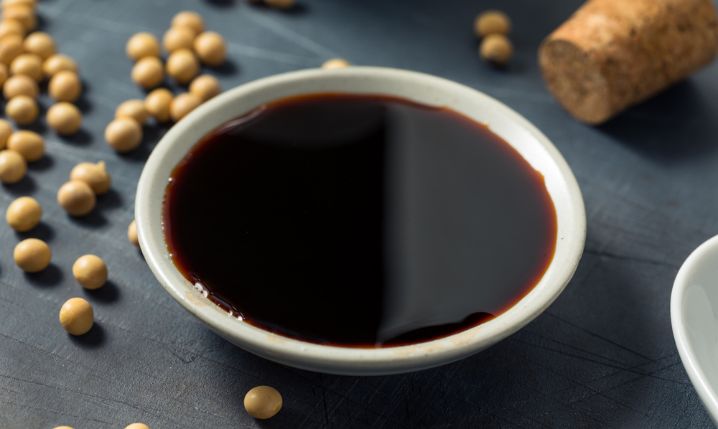In Asian cuisine, many soybean-based sauces are available, making it difficult to understand their differences. There can sometimes be sauces with only minor distinctions between one another. So, read on to find out what you need to know when comparing tamari vs. soy sauce.
Contents:
What Is Tamari?

Tamari, also known as tamari shoyu, is a Japanese sauce made from fermented soybeans. It is considered to be the “original” soy sauce variation brought to Japan from China.
It is typically a dark brown with a thicker consistency than many soy-based sauces. It has a rich taste with a nuanced and robust savory/umami flavor.
Tamari is made from fermented soybean paste (miso paste) that is pressed to extract the liquid, creating tamari sauce.
Tamari is known as being a gluten-free, lower sodium alternative to traditional Chinese soy sauces. Most organic brands of tamari are also MSG-free.
You can use tamari in noodle, rice, and stir-fry dishes. It also works well with sushi, sashimi, and dumplings as a dipping sauce.
What Is Soy Sauce?

Soy sauce is a Chinese sauce or ‘liquid condiment’ made from fermented soybean paste. It also contains roasted grains, brine, and various molds, all of which help to create its famous umami flavor.
Originating in the Han dynasty of ancient China some 2,200+ years ago, soy sauce is famous for its distinct savory taste that combines salty and umami flavors.
There are many types and varieties of soy sauce, but with traditional Chinese soy sauce, there are light-colored varieties and dark-colored varieties.
As soy sauce contains grains such as wheat, it’s not gluten-free, leading many to seek alternatives. Soy sauce contains moderate-high amounts of MSG (Monosodium Glutamate).
You can use soy sauce as a dipping sauce, as a base for stocks and soups, and more. It’s particularly used in noodle dishes and stir-fries all across Asia.
What’s The Difference Between Tamari and Soy Sauce?
| Tamari | Soy Sauce |
|---|---|
| Created from soybean paste. | Created from soybean paste. |
| Gluten-free, MSG-free (organic brands), lower salt content. | Contains gluten, MSG, and high salt content. |
| Rich, savory, nuanced flavors. | Salty, savory, sharp flavors. |
| Thicker consistency. | Thinner consistency. |
You now know some of these two sauces’ most important characteristics and key differences.
While both contain soybeans, that’s often where the similarity ends other than the fact they do make good substitutes for one another in most dishes.
Tamari is preferred by people with allergies, intolerances, and various other dietary requirements. It’s a much healthier option overall but isn’t always as easy to come across in the store despite its growing popularity.
- Consistency: Tamari has a thicker consistency than soy sauce, making it preferable as a dipping sauce in some dishes.
- Appearance: Tamari looks more like dark soy sauce, while regular/light soy sauce has a lighter appearance similar to vinegar.
- Taste and flavor: Tamari and soy sauce taste similar, but soy sauce has a more salty flavor than tamari.
- Culinary uses: Both are used similarly, working excellently as dipping sauces, stocks, soups, and more. You can use them interchangeably for stir-fries, rice dishes, noodle dishes, and almost any Asian recipe that calls for one or the other.
Conclusion
Tamari is a Japanese soy-based sauce based on Chinese soy sauce – essentially, it’s a type of soy sauce. Soy sauce is a Chinese soy-based sauce and the original soy sauce on which all others are based. They are used for hundreds of recipes across Asia, both being interchangeable for the other. There are minor differences in taste and consistency, but most choose one or the other based on personal preference and dietary requirements. Now you know all you need to know about tamari vs. soy sauce. Get eating!